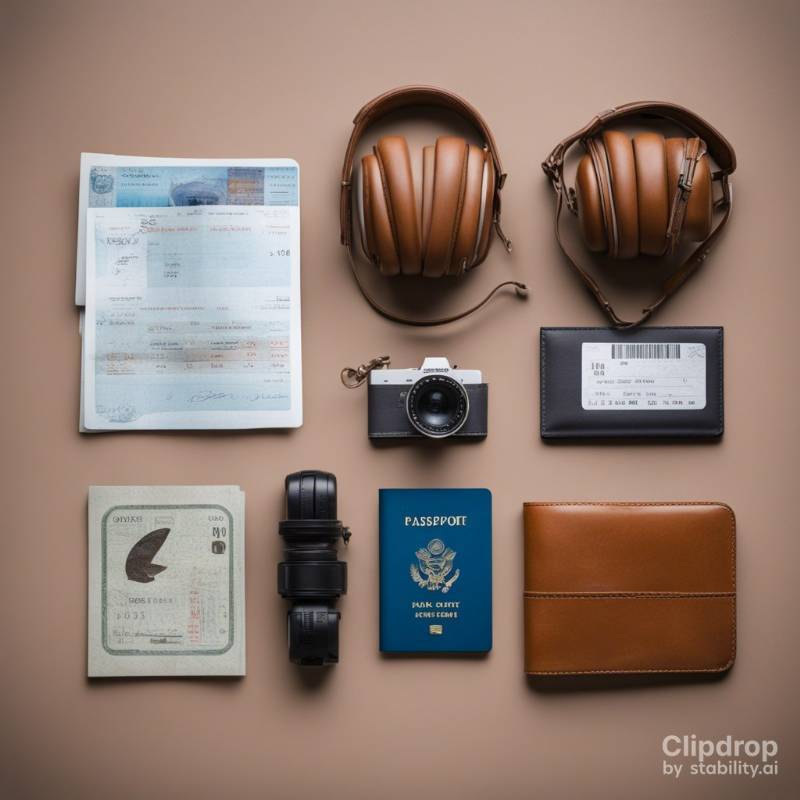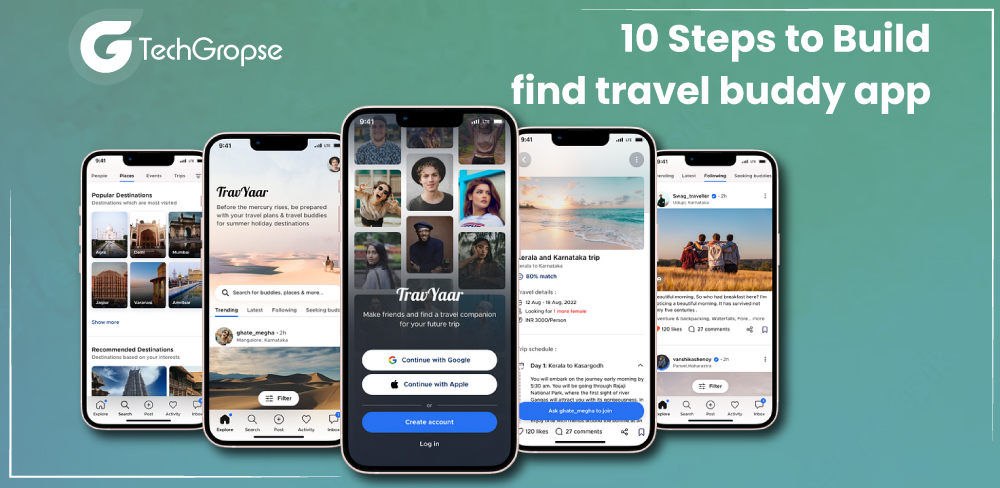Finding a travel companion can transform a solo adventure into a shared experience. This guide explores the multifaceted process of finding a travel buddy, from defining your needs and identifying potential matches to planning the trip and maintaining a strong relationship after the journey. Understanding the nuances of travel styles and shared interests is crucial for success. This guide offers practical strategies for navigating the entire journey.
The process encompasses several key stages, starting with defining your travel style and motivations, and progressing through identifying suitable companions, planning the trip together, ensuring a smooth journey, and finally, nurturing the relationship beyond the trip. A well-defined approach will significantly enhance the likelihood of a successful and enjoyable travel partnership.
Defining the Need for a Travel Buddy
Finding a travel companion can significantly enhance your travel experience, offering a blend of shared enjoyment and practical advantages. A travel buddy provides support, shared responsibility, and a unique perspective on the destination. Beyond simple companionship, the right travel buddy can make a trip safer and more enriching.
Motivations for Seeking a Travel Companion
Understanding the reasons behind seeking a travel buddy is crucial for a successful match. Individuals often seek a travel companion for various reasons. Some desire a shared experience with someone who shares similar interests and travel styles. Others prioritize safety and support, especially when venturing into unfamiliar or potentially risky environments. Companionship can also provide a balance to solo travel, allowing for opportunities for both independent exploration and shared activities.
Furthermore, some travelers may feel more comfortable or motivated to explore destinations with a friend.
Advantages of Traveling with a Friend over Solo Travel
Traveling with a friend offers numerous advantages over solo travel. Sharing the cost of accommodation, transportation, and activities can often lead to significant financial savings. Having a companion for shared experiences, like sightseeing or trying local cuisine, can enhance enjoyment and create lasting memories. Travel buddies provide an opportunity for conversation, laughter, and mutual support during the journey, enriching the overall experience.
Benefits of a Travel Buddy for Safety and Support
A travel buddy can significantly contribute to safety and support during a trip. Sharing responsibility for each other’s well-being can foster a sense of security, particularly in unfamiliar or potentially challenging environments. A companion can act as a point of contact, providing support and assistance if needed. This shared responsibility can also help in emergencies, making travel safer and more manageable.
Comparison of Travel Styles and Buddy Selection
Different travel styles will influence the search for a travel buddy. Adventurous travelers might seek a companion with similar risk tolerance and a willingness to explore off-the-beaten-path locations. Relaxation-focused travelers may prioritize someone who enjoys a similar pace and preference for comfortable accommodations. Those seeking cultural immersion may look for a travel buddy with a passion for learning about local customs and traditions.
A careful consideration of individual preferences and travel styles is key to selecting a suitable travel companion.
Pros and Cons of Traveling with a Buddy vs. Solo
| Factor | Traveling with a Buddy | Traveling Solo |
|---|---|---|
| Cost | Potentially lower accommodation and activity costs due to sharing. | Higher individual costs for accommodation, transportation, and activities. |
| Safety | Enhanced safety and support in unfamiliar or challenging situations. | Potentially greater risk in emergencies or unfamiliar locations, requiring self-reliance. |
| Flexibility | May require compromises in schedules and activities to accommodate the buddy’s preferences. | Maximum flexibility in itinerary and pace, allowing for spontaneity. |
| Experiences | Shared experiences and perspectives, but potential for differing interests. | Unique experiences tailored to individual interests and preferences. |
| Companionship | Enhanced companionship and shared memories. | Complete freedom and privacy. |
Identifying Potential Travel Buddies

Finding a travel companion can significantly enhance your trip, adding shared experiences and reducing the burden of solo travel. Choosing the right travel buddy involves careful consideration and a strategic approach to identifying suitable individuals. This section will explore various online platforms and strategies for connecting with potential travel companions.
Online Platforms for Finding Travel Buddies
Discovering potential travel companions online has become increasingly popular. Numerous platforms offer opportunities to connect with like-minded individuals who share your travel aspirations. Utilizing these platforms efficiently can streamline your search and lead to successful pairings.
- Social Media Groups and Forums: Dedicated travel communities on platforms like Facebook, Reddit, and Meetup offer valuable resources for finding travel buddies. These groups often focus on specific destinations, travel styles, or interests, allowing you to connect with individuals with similar preferences. For example, a Facebook group for hikers in the Himalayas might be a great place to find a companion for a trek.
- Travel-Specific Platforms: Specialized platforms dedicated to travel, such as Couchsurfing and Hipcamp, cater specifically to travelers seeking connections and accommodation options. These platforms often have built-in features for connecting with other users, including shared trips or activities. Couchsurfing, for instance, connects travelers with hosts offering accommodation in exchange for cultural experiences.
- Dating Apps and Websites: While not exclusively travel-focused, dating apps like Bumble or Tinder can be surprisingly effective for finding travel companions. Profiles often include information about travel preferences and destinations, making it easier to identify compatible partners for a journey. Matching based on interests can lead to finding someone who enjoys similar activities.
- Specialized Travel Forums: Many forums are dedicated to specific destinations or activities. For instance, a forum for backpackers in Southeast Asia can be a great place to connect with people who are looking for adventure and budget-friendly travel experiences.
Crafting a Compelling Travel Buddy Profile
A well-crafted profile is crucial for attracting potential travel buddies. It should highlight your interests and personality, ensuring you connect with someone who shares your values. A detailed profile allows others to understand your travel style and motivations, increasing the likelihood of a successful match.
- Highlighting Interests: Clearly outlining your interests and preferences in your profile is vital. Are you a foodie, an adventurer, or a history enthusiast? Specify the types of experiences you seek. Mentioning specific destinations or activities you enjoy can help attract compatible travel partners.
- Describing Your Travel Style: Detailing your preferred travel style is equally important. Are you budget-conscious, luxury-seeking, or adventurous? Are you a slow traveler or someone who enjoys rapid-fire exploration? Clearly stating your travel preferences can prevent mismatches and ensure you connect with someone who shares a similar approach.
- Communicating Your Personality: While outlining your interests is essential, sharing aspects of your personality adds a personal touch. Are you outgoing, introspective, or adventurous? Sharing your personality traits helps others gauge compatibility. Highlighting your sense of humor or passions will make you stand out from other profiles.
Comparison of Online Platforms
The table below provides a comparative overview of different online platforms and their strengths in finding travel companions.
| Platform | Strengths |
|---|---|
| Social Media Groups | Excellent for connecting with people in specific niche areas, great for finding people with shared interests |
| Travel-Specific Platforms | Built-in features for connecting with users and often include accommodation options |
| Dating Apps | Wide user base, allows for filtering based on interests, can lead to diverse connections |
| Specialized Travel Forums | Dedicated to specific destinations or activities, highly focused community |
Developing a Connection with Potential Buddies

Cultivating a genuine connection with potential travel companions is crucial for a successful and enjoyable trip. This involves more than just sharing basic details; it necessitates understanding shared interests, values, and communication styles. Successful connections are built on mutual respect and open communication. A thoughtful approach to initiating and maintaining these connections can significantly enhance the travel experience.Building a strong connection involves actively engaging with potential travel buddies, not just passively matching interests.
It’s about understanding their personalities and preferences, and demonstrating genuine interest in their perspectives. This proactive approach fosters a more fulfilling and collaborative travel experience.
Initiating Conversations with Potential Companions
Establishing initial contact with potential travel buddies requires a thoughtful approach. A well-crafted opening line can set the stage for a meaningful connection. Avoid generic or superficial inquiries; instead, ask questions that reveal deeper interests and motivations. Genuine curiosity about the other person’s background, aspirations, and experiences is key.
Demonstrating Interest and Enthusiasm
Demonstrating genuine interest and enthusiasm is vital in fostering connections. Active listening, thoughtful responses, and expressing excitement about shared interests will create a positive impression. Avoid sounding overly eager or pushy; instead, maintain a balanced and engaging communication style. Sharing personal anecdotes and travel experiences in a relatable way can also help build rapport.
Sharing Travel Plans and Interests
Sharing travel plans and interests effectively encourages a connection. Clearly outlining preferred destinations, activities, and desired pace of travel can help gauge compatibility. Highlighting any unique preferences or travel styles (e.g., adventurous, relaxed, budget-conscious) will help potential buddies understand your travel philosophy. A clear and concise sharing of travel styles and goals helps identify potential compatibility.
Importance of Shared Values and Interests
Shared values and interests are essential in selecting a travel buddy. Alignment in fundamental values like respect for different cultures, willingness to compromise, and an appreciation for different perspectives can greatly contribute to a harmonious travel experience. Similar interests in activities, like hiking, photography, or culinary exploration, can create shared experiences and bonding opportunities.
Open Communication and Mutual Respect
Open communication and mutual respect are foundational for a successful travel partnership. Clearly articulating expectations, boundaries, and personal needs is crucial. Being receptive to the other person’s perspectives and accommodating their needs are important aspects of mutual respect. Respect for differing opinions and a willingness to compromise are essential for maintaining a positive relationship.
Identifying Compatible Personalities
Identifying compatible personalities is vital for a smooth and enjoyable journey. Understanding communication styles, conflict resolution strategies, and preferred levels of independence or interdependence can help gauge compatibility. Considering individual personalities and behavioral patterns will help anticipate potential conflicts and ensure compatibility.
Icebreaker Questions for Initiating Conversations
- What’s your favorite travel memory, and why?
- What’s a travel destination you’ve always dreamed of visiting?
- What’s your preferred travel style (e.g., adventurous, relaxed, budget-conscious)?
- What are your top three must-do activities when traveling?
- What are some of your favorite travel books, movies, or podcasts?
- What’s a unique cultural experience you’ve had that you’d recommend to others?
- What’s your approach to handling unexpected situations during travel?
Communication Strategies Summary
| Communication Strategy | Description | Example |
|---|---|---|
| Active Listening | Paying close attention to what the other person is saying, both verbally and nonverbally. | Nodding, making eye contact, and asking clarifying questions. |
| Open-Ended Questions | Questions that encourage detailed responses and reveal deeper insights. | “What are your thoughts on…?” or “Tell me more about…” |
| Sharing Personal Experiences | Relatable stories and anecdotes that create a sense of connection. | “I once…” or “On a recent trip…” |
| Respectful Disagreement | Articulating differing opinions in a considerate manner. | “I understand your perspective, but I…” |
Planning the Trip Together

Effective travel planning with a buddy hinges on clear communication and shared understanding. This collaborative approach ensures both individuals feel heard and respected, ultimately leading to a more enjoyable and successful trip. A well-defined plan minimizes potential conflicts and maximizes the enjoyment of the shared experience.Establishing a strong foundation for shared travel goals and expectations is crucial. This mutual understanding fosters a positive and productive environment for making decisions and compromises throughout the entire trip planning process.
This shared vision, coupled with a meticulously crafted itinerary and budget, is essential for a harmonious and memorable journey.
Clear Communication in Trip Planning
Open and honest communication is paramount in any collaborative venture, especially when planning a trip. This involves actively listening to each other’s ideas, concerns, and preferences. Sharing travel styles, priorities, and any potential sensitivities or restrictions early on helps avoid misunderstandings and conflicts down the road. Specific examples include discussing preferred travel paces, dietary restrictions, budget limitations, and desired activities.
Establishing Shared Travel Goals and Expectations
Defining shared travel goals and expectations is vital. What are the primary objectives of the trip? Are they relaxation, adventure, cultural immersion, or a combination? Articulating these goals allows for the creation of a plan that aligns with both individuals’ needs and aspirations. Furthermore, establishing expectations regarding responsibilities, decision-making processes, and compromise strategies ensures a smooth and harmonious journey.
For example, if one person is a budget-conscious traveler while the other is a spontaneous explorer, establishing a clear approach to compromise is key.
Sample Itinerary Format
A well-structured itinerary serves as a roadmap for the trip. It provides a clear framework for each day’s activities, anticipated locations, and travel time estimations. A sample itinerary format could include:
- Date: (e.g., October 26, 2024)
- Location: (e.g., City Name, Country)
- Activities: (e.g., Morning: Explore the historical district, Afternoon: Visit the museum, Evening: Dinner at a local restaurant)
- Estimated Time/Duration: (e.g., 9:00 AM – 12:00 PM, 2:00 PM – 5:00 PM)
- Notes: (e.g., Transportation arrangements, potential weather concerns, specific restaurant recommendations)
Creating a Budget Together
Jointly creating a budget ensures transparency and shared responsibility. This involves outlining anticipated expenses, such as accommodation, transportation, food, activities, and any other potential costs. A spreadsheet or shared document can effectively track and monitor spending. Prioritize needs versus wants, and be realistic about potential costs. This shared financial awareness avoids surprises and helps manage expenses effectively.
Compromising on Travel Plans and Decisions
Compromise is an essential element of successful travel planning. Recognizing that both individuals may have differing preferences and priorities is crucial. Establish a clear method for making decisions, perhaps involving voting or consensus-building. For example, one person might prefer a budget-friendly hostel while the other prefers a luxury hotel. Finding a suitable compromise could involve staying in a mid-range hotel or alternating accommodations.
It is important to approach decisions with respect and empathy.
Sample Trip Planning Checklist (Buddy Involved)
A checklist ensures that all essential elements are considered. This helps prevent overlooking important details. A comprehensive checklist should cover aspects such as:
- Passport and Visa Requirements: Verify necessary documents are in order.
- Travel Insurance: Secure comprehensive coverage.
- Accommodation Bookings: Secure accommodations in advance.
- Transportation Arrangements: Arrange for flights, trains, or other modes of transportation.
- Activities and Tours: Book tickets or make reservations.
- Packing List: Compile a shared packing list.
- Emergency Contacts: Share emergency contacts.
- Local Currency Exchange: Plan for currency exchange.
Trip Planning Stages Summary
| Stage | Description | Key Actions |
|---|---|---|
| Pre-Trip Planning | Defining goals, research, and initial budget. | Identifying destinations, defining preferences, preliminary budget, preliminary itinerary. |
| Itinerary Development | Detailed planning of daily activities. | Specific locations, transportation, activities, and timing. |
| Budgeting and Financial Planning | Creating a shared budget and managing expenses. | Expense tracking, budgeting software, and financial tools. |
| Confirmation and Preparation | Finalizing bookings, packing, and preparing for travel. | Accommodation, transportation, activities, packing, emergency contacts. |
Ensuring a Smooth Trip
A successful trip hinges not only on choosing the right destination and activities but also on establishing a solid foundation of understanding and agreement with your travel buddy. Effective communication, clear expectations, and a willingness to navigate potential conflicts are essential for a positive and enjoyable experience. This section will Artikel key strategies to ensure a smooth journey.
Setting Clear Boundaries and Expectations
Establishing clear boundaries and expectations is paramount for a harmonious travel experience. This involves openly discussing personal preferences, comfort levels, and anticipated needs. Explicitly outlining expectations for spending, activities, and communication helps prevent misunderstandings and potential conflicts down the line. This proactive approach sets the stage for a comfortable and productive journey.
Handling Potential Disagreements or Conflicts
Disagreements are inevitable in any shared experience, including travel. Understanding how to address these conflicts constructively is vital. Open communication, active listening, and a willingness to compromise are crucial. Focusing on finding common ground and solutions rather than assigning blame will foster a positive dynamic.
Conflict Resolution Strategies
Effective conflict resolution involves a structured approach to address disagreements. Here are some strategies:
- Active Listening: Truly hearing and understanding the other person’s perspective, even if you don’t agree with it, is crucial. Avoid interrupting and focus on comprehending their point of view.
- Empathy: Try to understand the other person’s feelings and motivations. Consider their point of view and the factors contributing to their perspective.
- Compromise: Be willing to adjust your plans or expectations to meet the needs of both individuals. Finding common ground is essential for a positive resolution.
- Mediation (if needed): If the conflict escalates, consider a neutral third party to facilitate communication and help find a resolution.
- Taking a Break: Sometimes, stepping away from the situation can allow tempers to cool and perspectives to clear. Returning to the discussion later can help facilitate a more constructive dialogue.
Respect for Personal Space
Respect for personal space is essential for a comfortable and enjoyable travel experience. This includes recognizing individual needs for solitude, downtime, and different preferences regarding activities and pace. Acknowledging these differences and providing space for personal reflection and enjoyment are crucial for maintaining a positive relationship.
Sample Trip Responsibilities Document
A detailed document outlining trip responsibilities can be highly beneficial. This document should specify roles and responsibilities regarding accommodations, transportation, activities, and budget management. For example, one person might be responsible for booking accommodations, while the other handles transportation. This pre-planning clarifies expectations and minimizes potential conflicts.
Dealing with Differences in Travel Styles
Travel styles can vary significantly. One person might prefer a relaxed, spontaneous approach, while the other might prefer meticulous planning. Acknowledging and appreciating these differences is key to a successful journey. Open communication and flexibility are vital in navigating these differences, ensuring both individuals feel heard and respected.
Handling Unexpected Events or Emergencies
Unexpected events or emergencies can arise during any trip. Preparing for potential issues, such as lost luggage, medical emergencies, or natural disasters, can help mitigate negative impacts. Developing a communication plan, having backup funds, and identifying emergency contacts are crucial steps.
Potential Trip Conflicts and Solutions
| Conflict Category | Potential Conflict | Possible Solutions ||—|—|—|| Budgeting | Disagreements on spending limits or priorities | Create a detailed budget beforehand, agree on a spending plan, and have an emergency fund. || Activity Preferences | One person wants to visit museums, the other prefers outdoor activities | Plan a mix of activities to accommodate both preferences, or allow flexibility for individual interests.
|| Pace and Schedule | One person wants a slower pace, the other prefers a more fast-paced itinerary | Establish a flexible schedule with built-in downtime and time for individual exploration. || Accommodation | Disagreements on accommodation choices | Discuss preferences and consider compromise solutions, such as finding a balance between budget and comfort. || Communication | Lack of communication or miscommunication | Establish clear communication channels, agree on preferred methods of contact, and schedule regular check-ins.
|
Building a Long-Term Travel Partnership
Nurturing a travel partnership extends beyond the journey’s end. A successful trip with a travel buddy is enriched by the ongoing connection and shared memories that follow. This stage involves building a foundation for future adventures and maintaining a strong, respectful relationship.Building a lasting connection with your travel companion is vital. This goes beyond the simple act of sharing travel photos.
It involves cultivating mutual respect, understanding, and a shared desire to continue the journey together. The key lies in recognizing the value of individual needs and respecting personal boundaries while embracing the joy of shared experiences.
Maintaining the Relationship
Sustaining a bond with a travel buddy post-trip requires conscious effort. Shared experiences, no matter how small, contribute to the narrative of your relationship.
- Sharing Experiences: Regular communication, whether through social media, phone calls, or video chats, keeps the connection alive. This includes sharing anecdotes, travel tips, and even simply discussing daily life. A travel journal can also be a great tool for recording experiences and sharing them with your buddy.
- Celebrating Milestones: Remember significant moments of your trip, like birthdays or anniversaries, with a small gesture. Sending a thoughtful card, a shared meal, or even a digital slideshow can create a meaningful connection.
- Respecting Personal Time and Boundaries: Understand that individual needs and schedules may vary. Respecting each other’s time and allowing for individual pursuits is critical to maintaining a healthy relationship. Do not feel obligated to constantly communicate or plan activities.
Planning Future Trips
Exploring opportunities for future adventures is an important part of maintaining a long-term partnership. A good starting point is to keep the lines of communication open.
- Open Communication: Discuss potential future trips, sharing interests and preferences. Explore different destinations and create a shared bucket list. Expressing excitement for the possibility of future travel can strengthen the bond between travel buddies.
- Shared Interest Exploration: Identify shared interests and passions outside of travel. This can broaden the scope of your friendship, providing a strong foundation for future adventures. This may lead to exploring new hobbies together or simply engaging in conversations about shared interests.
- Collaborative Planning: Collaboratively brainstorm potential destinations, research options, and allocate roles for planning the next trip. Using shared calendars and online tools can streamline the process.
Celebrating the Journey
The shared experience of travel is more than just the destination. The journey itself is a source of memories and shared stories.
- Remembering the Trip: Organize a trip-themed gathering with friends and family to share memories and stories. This could involve a slideshow, a potluck meal, or simply recounting funny moments.
- Creating Keepsakes: Collectively create keepsakes, like a photo album, a scrapbook, or a custom-designed travel mug, to commemorate the trip. These tangible reminders can spark conversations and strengthen the bond.
Maintaining a Strong Relationship
Building a lasting travel partnership is an ongoing process.
- Prioritizing Communication: Regular communication, even if it’s just checking in, can maintain the connection and prevent misunderstandings.
- Sharing Responsibilities: Share responsibilities for planning future trips to ensure everyone feels included and valued.
Maintaining the Relationship Summary
| Category | Action |
|---|---|
| Communication | Regular check-ins, sharing experiences, celebrating milestones |
| Future Planning | Discussing future trips, exploring shared interests, collaborative planning |
| Celebrating the Journey | Organizing gatherings, creating keepsakes |
| Relationship Maintenance | Prioritizing communication, sharing responsibilities |
Wrap-Up

In conclusion, finding a travel buddy is a rewarding experience that requires careful consideration and proactive steps. This guide has Artikeld the crucial stages, from initial connection to long-term partnership, ensuring a positive and lasting travel experience. By understanding individual needs, communicating effectively, and respecting personal boundaries, travelers can forge strong bonds that extend far beyond the duration of the trip itself.
This comprehensive guide will equip you with the tools to make your travel experience an unforgettable one.